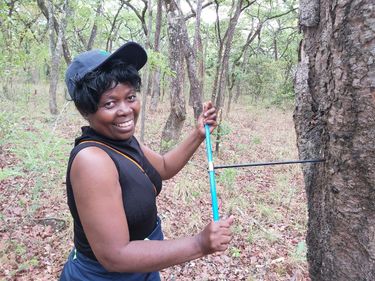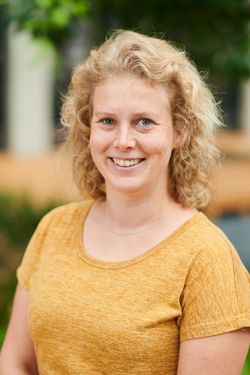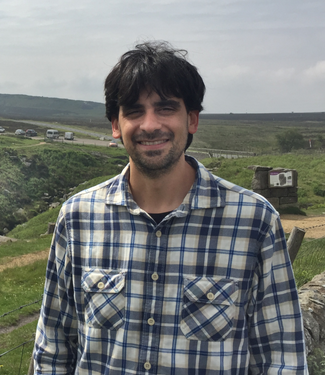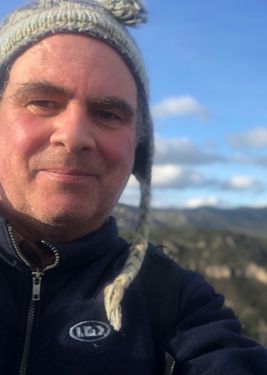
Sessions in which Greg King participates
Tuesday 28 June, 2022
As of 2020, 56% of the world’s population live in urban areas. These individuals benefit from numerous ecosystem services provided by urban forests, including urban heat island mitigation, energy use reduction, stormwater interception, wildlife and pollinator habitat provision, air pollution removal, and carbon sequestration. Urban greenspaces are also often the most accessible avenue for exposure to the natural environment, providing additional aesthetic, recreati...
Wednesday 29 June, 2022
Information garnered from historical timbers and wooden artifacts (e.g. houses, barns, ships) can greatly enhance our understanding of human, ecological, and climate history, especially in regions where few old-growth forests and trees remain, tree longevity is relatively short (less than 300-400 years), and environmental conditions break down wood rather quickly, like in mesic to wet regions Over the last decade plus, the application of tree-ring techniques on woo...
Over the last 140 years, lakes in the UNESCO Beaver Hills Biosphere, located east of Edmonton, Alberta, have experienced significant water level changes. At Cooking Lake, lake levels are estimated to be 9 feet lower than the historic high. These changes have been attributed to declines in precipitation, although water levels in Cooking Lake were not consistently measured until after 1956, with few measurements in the first half of the 20th century and no information on water levels prior t...
Sessions in which Greg King attends
Monday 27 June, 2022
Free, in person and onlineWe will hold a practical, skills-based workshop introducing openDendro -- an open-source framework of the base analytic software tools used in dendrochronology in both the R and Python programming languages. openDendro is a new unified set of tree-ring analysis tools in open-source environments that provides the necessary baseline for dendro...
Meet colleagues and friends in an informal settingFree drinks for all!
Tuesday 28 June, 2022
Africa is faced with a number of challenges including climate change and ecological disturbance due to various anthropogenic activities. These problems adversely affect the forests and also ecosystem services. My appreciation for the forests motivated me to pursure my undergraduate studies in Forestry. I first applied dendrochronology during my PhD research which focused on understanding the climate change vulnerability of the Zambezi teak forests in Zambia. However, lack of research facil...
Climate change poses an existential threat to trees, given our understanding of the importance of climate in shaping their geographic distributions. Climate envelope models are commonly used to predict how species will respond to climate change. These models give rise to the leading edge-trailing edge paradigm for range change: populations at the cool edge of a species’ distribution are expected to benefit from warming, whereas populations at the warm edge are expected to decline. We chall...
Tree-ring time series provide long-term, annually resolved information on the growth of individual trees. However, public tree-ring archives contain a considerable portion of data collected from trees that have been selected with specific research questions in mind (e.g., for climate reconstruction). This makes these archives a biased representation of the sensitivity of forest ecosystems to ongoing climate variation (e.g. temperature, precipitation), including non-stationarity (i.e....
We present a 211-year tree-ring-based reconstruction of the annual mean flow of the Sainte Anne River, Gaspésie, Québec, Canada. The river traverses through the interior of the Gaspé Peninsula where the instrumental hydrological and climatic records are particularly short. This is the first streamflow/soil moisture reconstruction between the Hudson River and north-central Québec, filling a substantial geographical gap along the eastern North American margin, and adding to the only three ex...
Evidence of volcanic cooling and its human impacts has been described for various regions of the globe over the past several centuries to millennia, derived from paleoclimatic and historical data. Due to its remote location, detailed accounts of such impacts over Northwestern North America (NWNA) are still quite limited. Here we use a newly expanded tree-ring density network (derived from blue intensity as well as maximum latewood density parameters) to assess the climatic and human impact...
The spatial scale of climate fluctuations, or effective spatial degrees of freedom (ESDOF), depends on the timescale and the forcing: while local scale variability between far away locations may be independent on short timescales, they may become coherent over sufficiently long timescales, or if they are driven by a common forcing. While ESDOF have been estimated from instrumental data over the historical period and climate model simulations, it remains difficult to perform such analysis o...
Tree-ring research has given generations of scientists a long memory of what is acceptable for a tree to be included for data analysis. The established criteria, however, were set through purposeful goals to maximize the response for climatic reconstructions. Ecology is different. Tree-rings are increasingly being used to study a wide swath of ecology, including the carbon cycle or the response of ecosystems to global changes. A fundamental aspect of ecology is to understand the range of r...
Floods and droughts have recently worsened in the Fraser River Basin (FRB), British Columbia, causing significant impacts to western Canadian economy, ecosystems, and societal wellbeing, as well as the costliest natural disaster in the province’s history in 2021. These extreme events present a major management challenge since the FRB is susceptible to unregulated spring flood and summer drought events, even in the same year. Meanwhile observational streamflow datasets are both short and po...
Dendroprovenance is a discipline usually linked to dendroacheology or wood commercialization; however, other purposes as inferring the origin of wood in rivers (i.e., instream large wood, LW) are often overlooked. LW in fluvial ecosystems enhances its geomorphology and biodiversity, but also increases potential risk during floods. Thus, knowledge about its source is crucial for understanding LW dynamics and optimizing river and riparian forest management. This project aims at deve...
Wednesday 29 June, 2022
Dendrochronology is considered one the most precise of all the scientific dating techniques. However, it requires long sequences of tree rings and a master record for both the species and region in question. At the University of Groningen, we have been pioneering a new approach to dating that combines the precision of dendrochronology with the versatility of radiocarbon dating. It relies on the detection of spikes in the annual radiocarbon record, thought to b...
The main objective of this study was to develop a universal response function to integrate climatic and genetic effects on the diameter growth of 13 eastern white pine (Pinus strobus L.) provenances planted at seven test sites throughout the part of the species’ native distribution in eastern North America. The test sites (i.e., Wabeno, Wisconsin, USA; Manistique, Michigan, USA; Pine River, Michigan, USA; Newaygo, Michigan, USA; Turkey Point, Ontario, Canada; Ganaraska, Ontario, Canad...
In the 1970s, forest geneticists with the British Columbia Forest Service established a number of long-term provenance trials throughout the province. The Trinity Valley (TV) provenance trial was established in 1975 in the southern interior to evaluate interior Douglas-fir (Pseudotsuga menziesii var. glauca) across the species’ range. TV is a factorial experiment, where 64 populations of 4 year-old Douglas-fir seedlings were planted in a randomized complete-block design with three replicat...
Climate change threatens forest trees. Their ability to resist depends on their potential to adapt. Phenotypic plasticity, i.e. the potential for individual adaptation, is a rapid mechanism that can allow trees to adjust to new climatic conditions. Tree-rings allow retrospective estimation of phenotypic plasticity of wood formation to climate in forest trees. In this study we show how to estimate linear reaction norms of annual ring variables as a function of climate. We use the slope of t...
The Mid-Ohio River Valley’s (USA) rich cultural fabric is preserved in the extant 19th century buildings that dot the landscape. Extensive tree-ring analysis 3has provided construction and modification dates for regional buildings (n > 200) such as barns, houses, mills, churches, and various outbuildings. In addition to determining construction dates, the goals of this long-term study include identifying the various timber types used in construction, determining potential bias and cause...
Assisted gene flow (AGF) may help facilitate tree species’ adaptation to future climatic conditions. When applied to resource-producing species such as black spruce (BS, Picea mariana), AGF could contribute to maintaining forest productivity and therefore carbon sequestration. For AGF to succeed, it is important to determine how growth varies among different populations under different climates, especially for species with large distribution ranges. Existing common garden experiments repre...
Presentation of all Ameridendro2022 posters.FREE LUNCH FOR ALL ATTENDEES!
This is a mandatory (!) .... and FREE (!!) cocktail & award ceremony (!!!)(in replacement of the Banquet formula)->->->->->->->->->->->->->->->->->->After a great summer day of scientific and urban discoveries in our beloved MTL, we wish to bring together all the AmeriDendro community in one place and congratulate the TRS awardees for their remarkable achievements! -Bonsinsegna award-Fr...
Thursday 30 June, 2022
How old are tropical trees? This fundamental question has long driven the curiosity of laymen and scientists. But only recently, a great number of studies conducted by many brave dendrochronologists resulted in a significant tree-ring-based knowledge that allows us to start accurately estimating tree ages across the globe. As science goes, not only knowing the longevity of tropical trees is essential to understanding forest dynamics and its role in biogeochemical cycles, but one must also ...
Neogene fossil beds in the Canadian Arctic Archipelago (CAA) provide a window into past greenhouse intervals and insights on what a future, warmer Arctic may look like. In this study, we use the hydrogen isotopes of lignin-methoxy groups (δ2HLM) from sub-fossil wood from six CAA sites (73-80°N) as a proxy for the δ2H of precipitation-derived plant water and paleotemperatures; five study sites cover Pliocene timeslices (~5.3-2.6 Ma) and the other site captures the middle Miocene (~15 Ma). F...
A gap of millennial tree-ring data suitable for dendroclimatology has long been evident in the North American boreal forest. In my talk, I will describe the adaptive approach we have developed to build and improve a data network for millennial dendroclimatology in the eastern Canadian taiga. Recurrence of stand replacing wildfires is the most important constrain to the elaboration of long tree ring chronologies, which can only be developed away from regions ...
Allies have emerged as key enablers of diversity and inclusivity initiatives in the workplace, in professional associations, and in everyday life. But what is an ally? What skills are required to be an effective ally? How do we hold ourselves and our community members accountable for being effective allies? This symposium will provide a deeper understanding of what it means to be an ally and the skills to help advance allyship as individuals and as a community. Fur...





